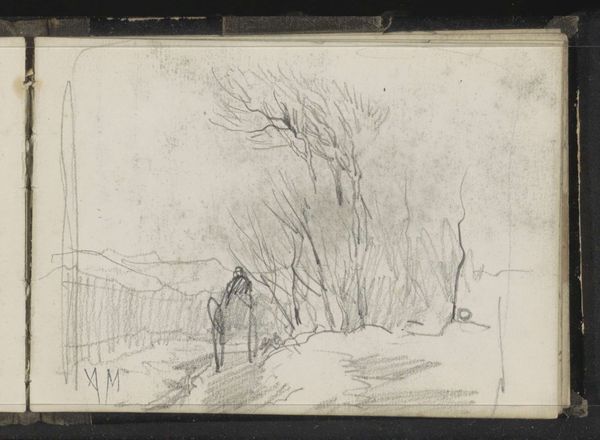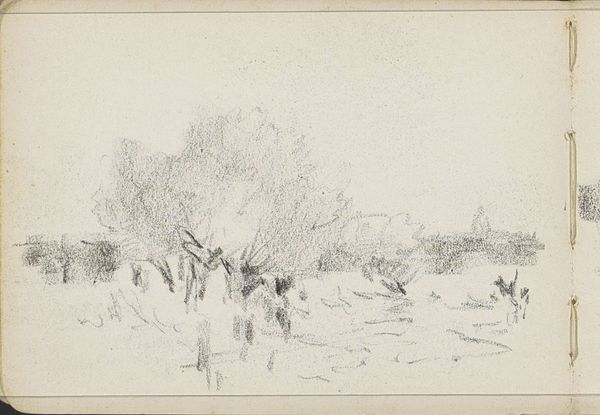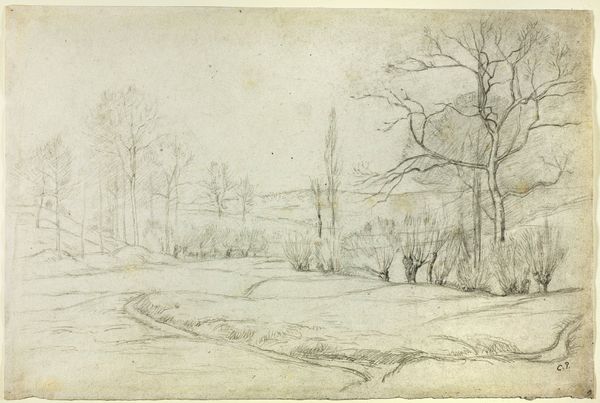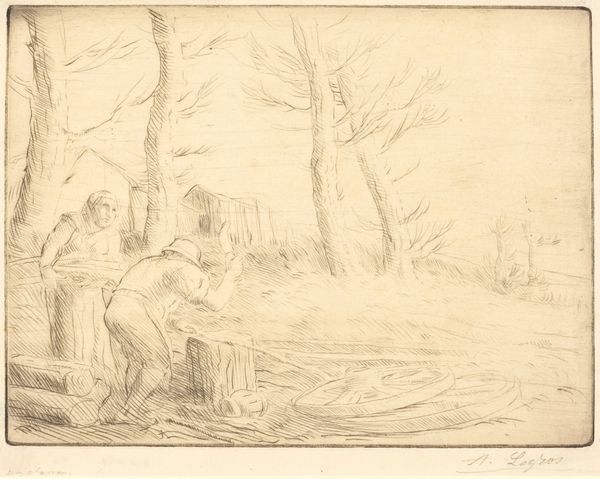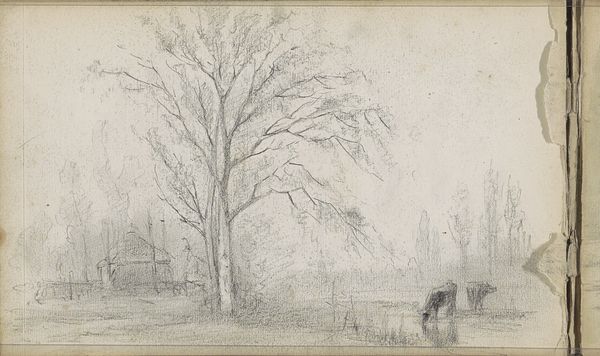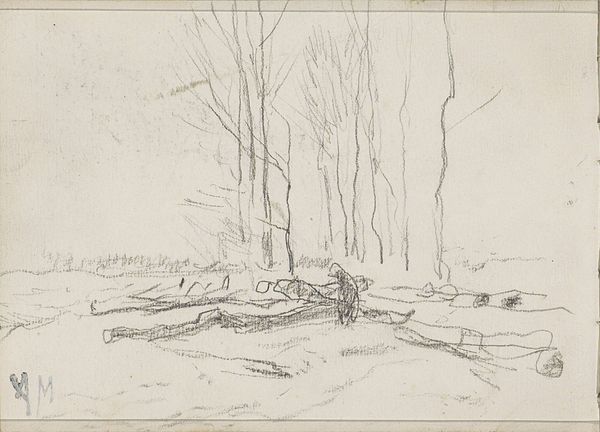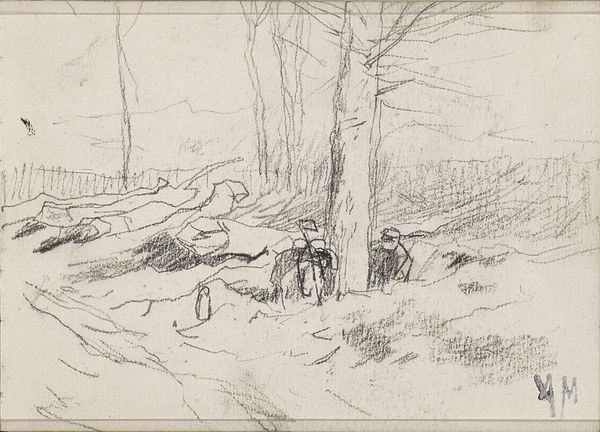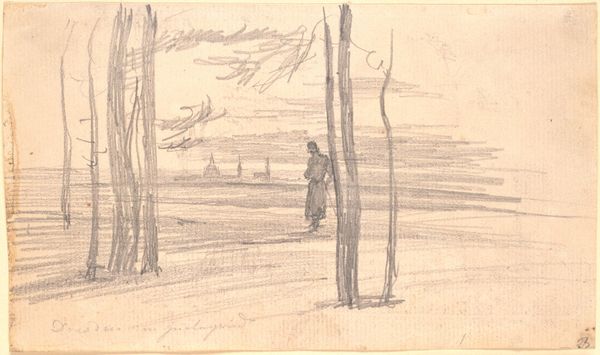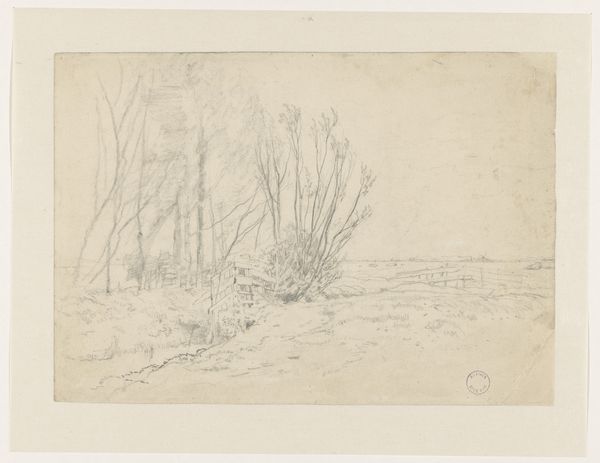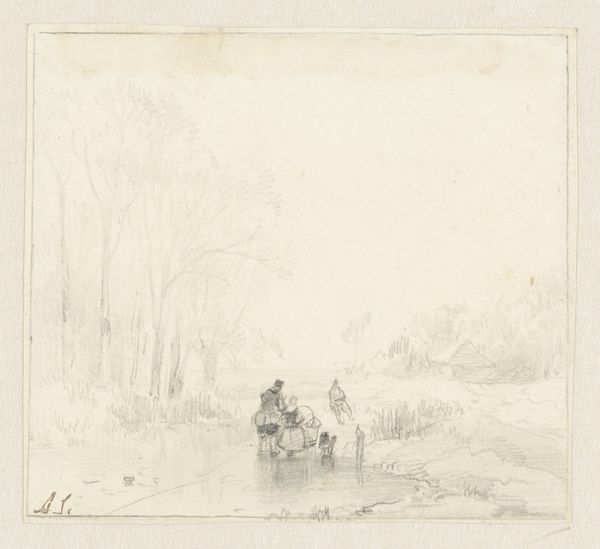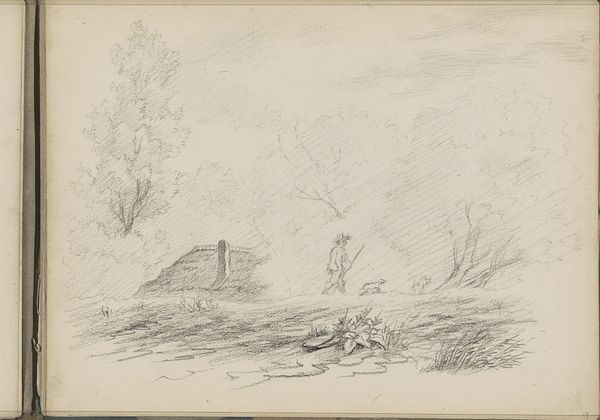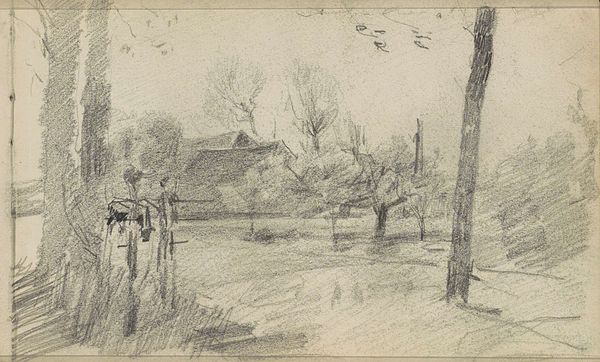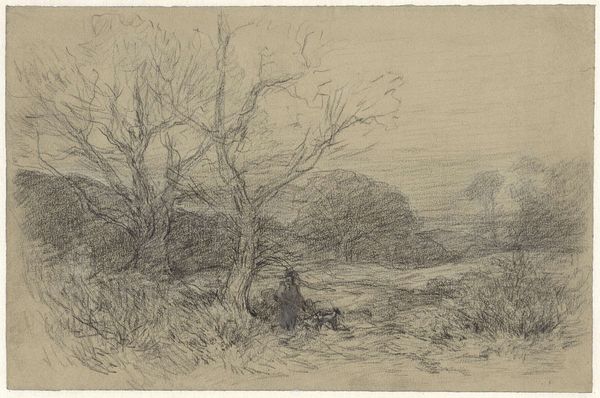
drawing, pencil
#
drawing
#
impressionism
#
pencil sketch
#
landscape
#
charcoal drawing
#
figuration
#
underpainting
#
pencil
#
realism
Dimensions: height 158 mm, width 247 mm
Copyright: Rijks Museum: Open Domain
Editor: This drawing, "Polderlandschap met figuren" by Willem Cornelis Rip, was made between 1876 and 1877, using pencil. It feels…dreamy. Almost like a memory fading. What do you see in this piece? Curator: I see the weight of tradition and rural life rendered in ephemeral strokes. Look at the figures; their solidity contrasts with the sketch-like quality of the landscape. Consider, what does this deliberate choice of representation suggest about the fleeting nature of this way of life versus the enduring presence of the people? Editor: That’s interesting! So the hazy landscape hints at change? Curator: Precisely! The polder, traditionally reclaimed land, already signifies human intervention altering nature. The artist juxtaposes the human figures, perhaps representing continuity and endurance, with the transforming land. Do you perceive a dialogue between resilience and vulnerability within this symbolism? Editor: I do now! The figures seem grounded even though everything around them feels transient. It's like they're carrying the history of the land with them. Curator: Indeed. The medium itself, pencil, adds another layer. A sketch often implies something incomplete or in progress. Rip uses this inherent quality to emphasize that the landscape and their life is also evolving. How does it impact your perception of "Polderlandschap met figuren"? Editor: It makes me think about how history isn't fixed but constantly being reshaped by the present. I thought it was a nice picture but the symbols within give it much deeper weight. Curator: The visual language embedded is very evocative. What appeared a mere depiction becomes a poignant reflection on cultural memory, identity, and the passage of time.
Comments
No comments
Be the first to comment and join the conversation on the ultimate creative platform.
